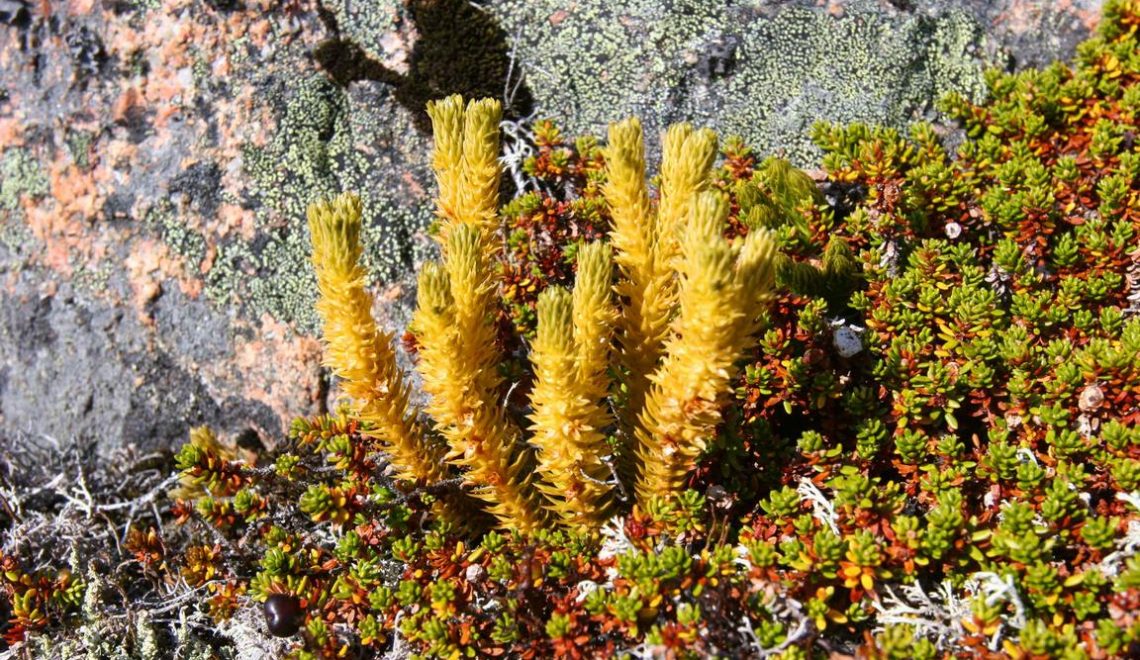
Nearly 2,000 different plant species grow in Greenland. To survive the cold and the short summer season, they have developed survival strategies, such as dwarfism, that enable them to withstand difficult climatic conditions, in particular snow cover for much of the year and the cold. When the tundra loses its white coat, we discover the mosses, lichens, shrubs and flowers that flourish in the Arctic summer. Here are just a few examples.
Angélique (Angelica archangelica)
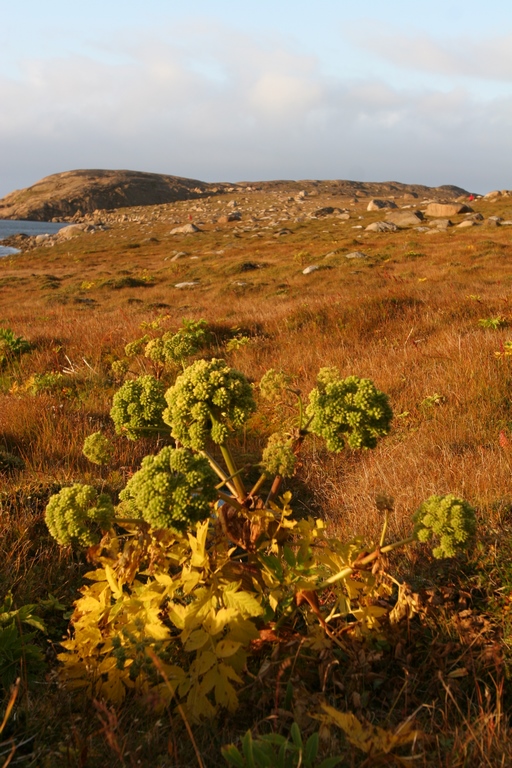
This beautiful umbellifer with its green inflorescences is undoubtedly one of the tallest flowers growing on Greenland soil. Its size is surprising to visitors used to the rickets of the plant cover. Very hardy, it decorates the gardens of some villages, but can also be found in the wild. Its stalks and stems are used in pastries and confectionery in the form of candied fruit (it has been a speciality of the town of Niort since the 18th century). It is considered a vegetable in Greenland and its tender leaves are used as a condiment to flavour salads and soups. Family Apiaceae.
Armérie maritime (Armeria maritima)

Also known as sea ilex or Olympus grass, maritime armeria is a hardy, evergreen perennial. It forms large, evergreen cushions that flower from summer to autumn and adapts well to the rocky soil of the South Greenland coastline. From the very slender leaves of the arméria grow slender stems bearing white or pink flowers, grouped in pompons, which sway in the breeze. Family Plumbaginaceae.
Camarine (Empetrum nigrum)
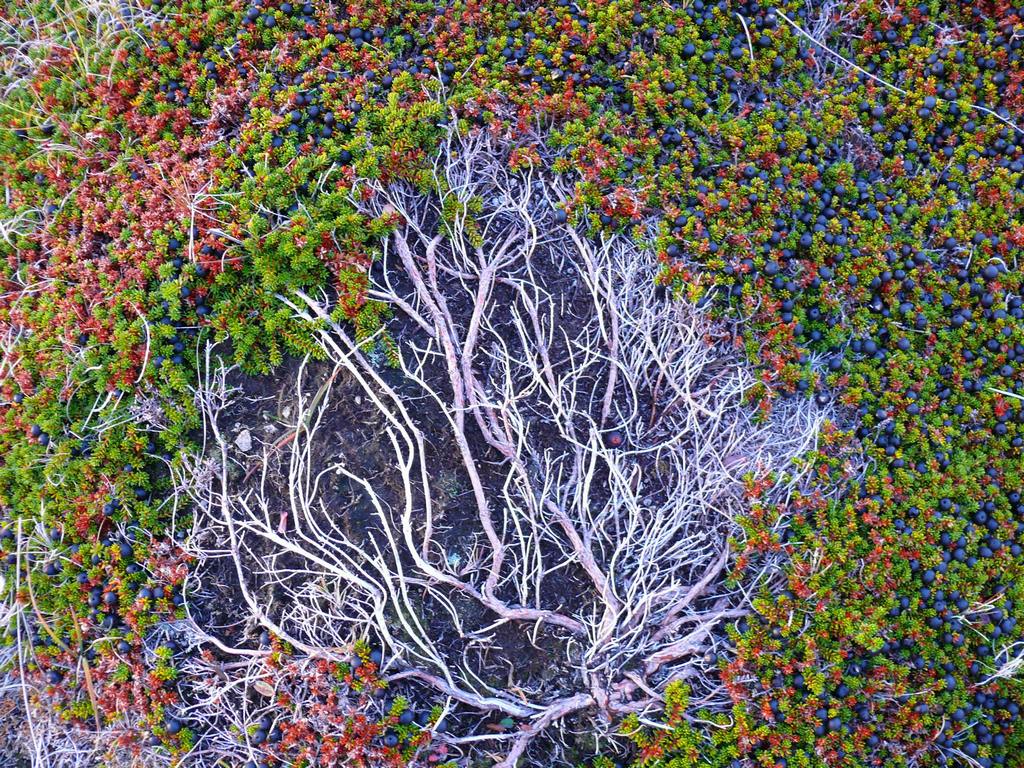
Black Camarina is a very hardy evergreen sub-shrub that grows in acidic soil. The female flowers produce very tasty, edible black berries resembling bilberries. They can be made into jam or cakes. It grows as a broad, ground-covering cushion. The stems of this plant are capable of taking root in contact with the ground. They are densely covered with small, very narrow, leathery leaves that resemble heather. In the Middle Ages, crowberry wine was used to replace communion wine in times of famine. Ericaceae family.
Tufted bellflower (Campanula cespitosa)

This herbaceous perennial with blue bell-shaped flowers is propagated by seeds that fall to the ground and are carried by the wind. A magical encounter in the northern light. Family Campanulaceae.
Sedge (Carex glareosa)
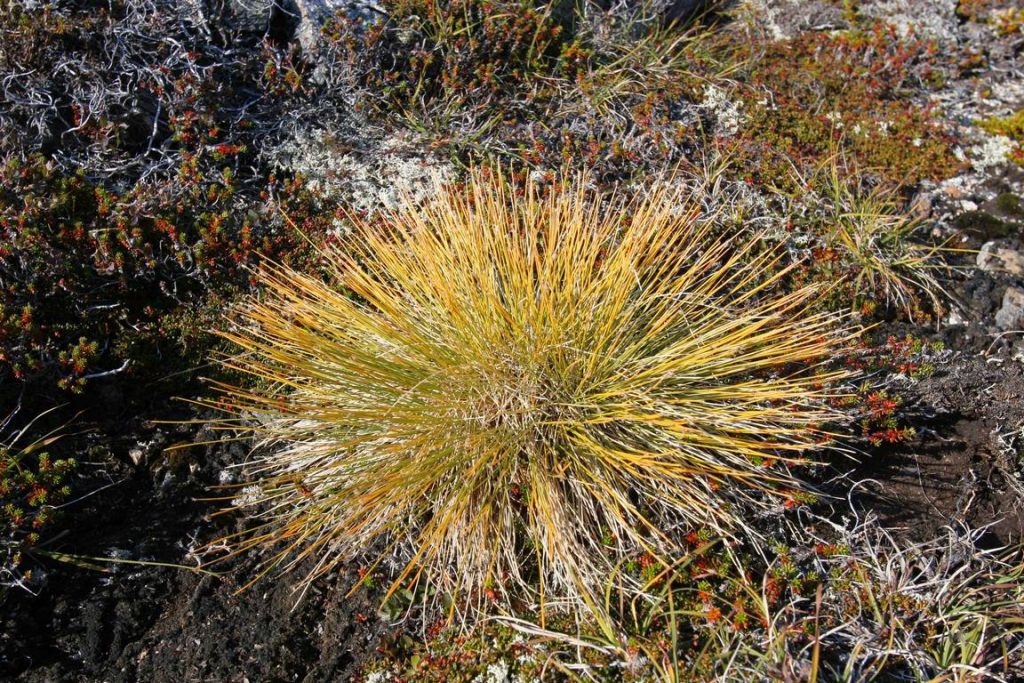
The sedge grows in clumps and can withstand difficult conditions, even saltwater flooding. Its jonciform leaves bear small, very compact inflorescences. The Carex genus comprises around 1,800 species found all over the world. Family Cyperaceae.
Scheuchzer's cottongrass (Eriophorum scheuchzeri)
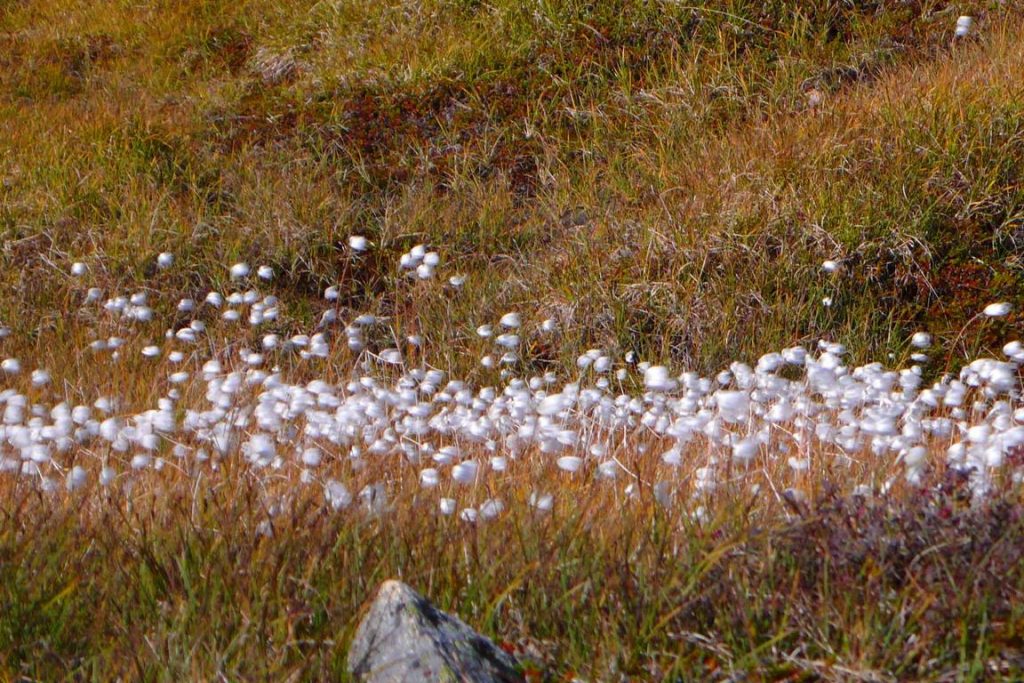
A plant of damp places and peat bogs, cottongrass can be recognised from afar by the silky, cottony white tufts on its slender stem. It can be found throughout the northern hemisphere, including Scandinavia, Iceland, Greenland, Canada and Svalbard, as well as in France, particularly in the Alps. Family Cyperaceae.
Alpine Lycopod (Diphasiastrum alpinum)

On the Greenland tundra, the Alpine Lycopod is a perennial plant that flowers in September. Its long (up to 15 cm), creeping stems divide into bundles of upright branches like barely flattened drum sticks, 1-3 mm wide. Its small, lanceolate, acute leaves are arranged in scales. Family Lycopodiaceae.
Pink thorn (Rhodiola rosea)

Rose thistle is an oily plant that grows in clumps from a rhizome in rocky screes. It is found in the southern and eastern parts of the island. The stems can reach 30 cm in length, and the thick, water-logged leaves are green and red, particularly in autumn when the weather turns colder. It is not the colour of its flowering stems that justifies its name of "rose", but the smell of its root (from the Greek rhodios: of rose). Family Crassulaceae.
Iceland poppy (Papaver nudicaule)

This poppy, native to the cold regions of North America and Asia, brightens up the tundra with its white or yellow flowers. The flowers bloom throughout the Arctic summer and the foliage is evergreen. Harmoniously bent into a swan?s neck, the flower stalks stand upright as the blossom bursts. When ripe, the fruits open at the top, scattering numerous small, round seeds as soon as the stem is shaken by the wind. The roots are organised around a taproot that enables it to draw its nourishment deep from the soil. Family Papaveraceae.
Selaginella (Selaginella selaginoides).
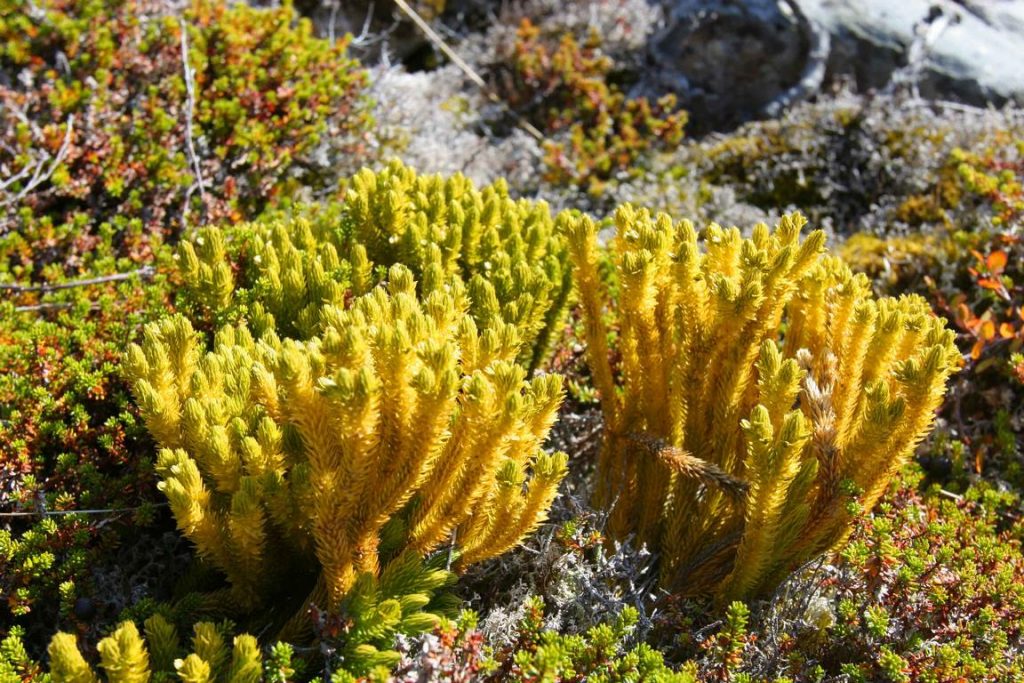
This small plant, which grows in clumps on rocky tundra ground, is very delicate. Its leaves are lanceolate, 2-4 mm long, pointed, ciliated-denticulated and arranged in a spiral. It is also found in damp areas and along the banks of streams in the Pre-Alps. Family Selaginellaceae.
Text and Photos: Brigitte Postel

